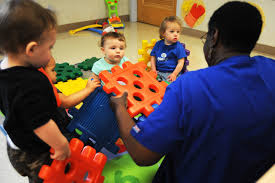Safe Toys for your Toddler
Safety of your
children in every possible aspect is always at the top of your mind. However,
you may not be aware that the toys you have bought could be a source of trouble
for them. Toys are not just fun for kids; they can also be part of their
learning experience and a source of danger. It is very important to choose the
right toys for very young children and toddlers. The wrong toys can cause
serious injury while with the right ones can make you feel relaxed, as your
children’s playthings, you know, are safe.
Here is a checklist for your benefit:
 |
| Image Courtesy : https://encrypted-tbn0.gstatic.com/ |
- Cleanliness: Whatever toys your children use, ensure that they are clean. It’s not just visible dirt you need to be worried about; spittle and other bodily fluids could spoil the toys, although invisible; their pathogenic content can be dangerous to children. This should not make you become paranoid about toys in general; just follow normal precautions to ensure cleanliness.
- Age-appropriacy: All toys have recommended ages on the packaging. Make sure that the toys are age appropriate, especially for children under the age of three.
- Warning labels: Look for warning labels on the packaging or the toy itself and follow all precautions listed.
- Defects: Toys are sometimes recalled if they are found to be defective, or if there are complaints from parents about dangers that were not spotted during the process of manufacture. Check whether the toy you have bought has been recalled or not. You can get this information from a number of internet resources.
- Dangerous removable parts: Be extra careful of very small toys or toys that have small removable parts. If a toy or a part of it can go into a toddler’s mouth, it probably will, and that could be trouble.
- Loudness of musical toys: If a toy produces sound, let it not be so loud as to frighten the child or even damage hearing.
- Battery-powered toys: If a toy contains batteries, check after the play whether the batteries are still in place and have not been removed. Let not a child accidentally swallow a battery.
- Gut feeling: Go with your gut. If you feel a toy is unsafe, your subconscious may be telling you something has escaped your notice. If you are uncomfortable with a toy, do replace it with one you are happy with
Outside home
Home is not the
only place children play. If your child goes to daycare, ask the people in
charge about the toys there. Find out about how and how often they are cleaned
to ensure safety and age-appropriacy.
You can depend
on a reliable internet resource
that will provide you with details and contact information of daycares near you
and possibly the status of toys kept there. You can check them out and make a
personal visit to inspect the setup yourself. You can thus ensure that your
child is safe to play with the toys there.


Comments
Post a Comment